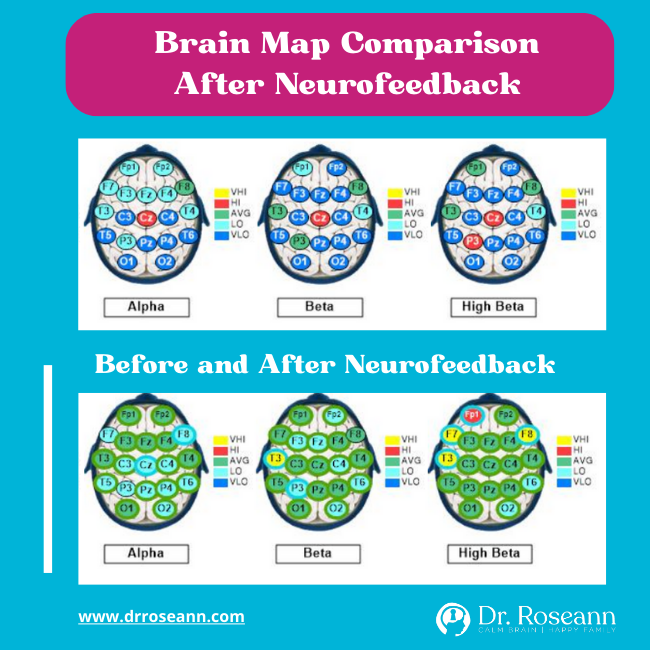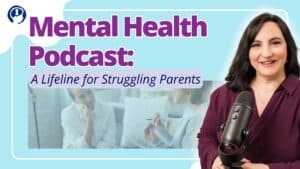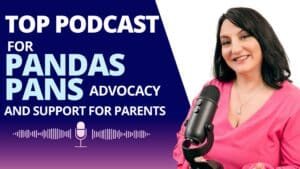Understanding the workings of the brain can be eye opening, especially for parents whose children or teens have been diagnosed with Attention Deficit Hyperactivity Disorder (ADHD). Let’s dive into structural and functional distinctions between a normal brain and an ADHD brain, with an emphasis on embracing the unique attributes associated with ADHD.
How Does ADHD Affect the Brain?
Attention Deficit Hyperactivity Disorder (ADHD) is a complex neurodevelopmental disorder that has substantial implications on the brain's structure and function, particularly impacting the executive functions.
These executive functions are a set of cognitive processes that are crucial for controlling behavior, managing emotions, initiating and completing tasks, planning, and organization. Let's delve deeper into how ADHD manifests in the brain and affects these vital functions.
Impairment in Executive Function
The primary hallmark of ADHD is an impairment in executive functions,which means that a child or person has difficulty with planning for a future event. We need executive functioning skills in everyday life to help us juggle tasks.
Executive Functioning Deficits can manifest in several ways:
Impulse Control:
- Individuals with ADHD often find it challenging to suppress impulses. This may lead to behaviors that are seen as erratic or thoughtless. While this impulsivity can be challenging, it's also linked to creativity and spontaneity which are positive traits often found in individuals with ADHD.
Attention and Concentration:
- ADHD affects the brain's attention systems, making it difficult to maintain focus on tasks that may be considered mundane or requiring sustained attention. However, many individuals with ADHD can hyperfocus on tasks that genuinely interest them, showcasing an ability to concentrate intensely under the right circumstances.
Organization and Planning:
The ability to plan, organize, and prioritize tasks is often compromised in individuals with ADHD. This can affect both daily life activities and long-term planning.
Differences Between the ADHD Brain and the Neurotypical Brain
While every brain is unique, understanding the general differences between a neurotypical brain and an ADHD brain can foster a better comprehension and acceptance of ADHD.
Brain Structure and ADHD
Research has shown significant differences in brain structure between neurotypical individuals and those with ADHD. For instance, studies using MRI scans have found that certain areas of the brain, like the caudate nucleus and the prefrontal cortex, may be smaller in individuals with ADHD. Additionally, the overall brain size and rate of brain development could differ.
ADHD Brain Waves vs Normal
Brain wave activity, as measured by QEEG (Quantitative Electroencephalogram), often shows variances in individuals with ADHD. These differences may relate to attention, impulsivity, and hyperactivity symptoms associated with ADHD.
The patterns of brain waves can offer insights into how the brain is functioning, and can be integral in understanding and managing ADHD symptoms. For example, an ADHD brain typically has low levels of Beta, which is needed for focus.
Brain Communication or Brain Hubs
In ADHD brains, the communication between different brain hubs or networks, such as the default mode network, may be less coordinated. This lack of coordination can affect an individual’s ability to shift attention smoothly from one task to another.
We are beginning to understand that ADHD is more about differences in brain’s communication system and not just difference in neurotransmitters and the frontal cortex.
Neurotransmitters and ADHD
ADHD is also associated with the dysregulation of neurotransmitters, which are chemicals that transmit signals between nerve cells in the brain. Particularly, dopamine and norepinephrine are two neurotransmitters that play significant roles in attention and arousal, and their regulation is often altered in individuals with ADHD. This dysregulation can contribute to symptoms of inattention, hyperactivity, and impulsivity.
Understanding the interplay between neurotransmitters and ADHD provides a clearer picture of the neurobiological underpinnings of this disorder.
Dopamine
Dopamine is often referred to as the “feel good” neurotransmitter due to its role in reward and pleasure centers of the brain. It's also pivotal in modulating attention and reinforcing behavior, which helps individuals to stay focused and strive towards goals.
Dopamine Dysregulation:
- In individuals with ADHD, the regulation and activity of dopamine may be altered. For instance, research suggests that people with ADHD may have lower levels of dopamine or less active dopamine pathways, which can contribute to symptoms of inattention and impulsivity.
Reward System:
The altered dopamine regulation can also affect the reward system, potentially leading to a higher need for stimulation and reward in individuals with ADHD. This may manifest as impulsivity or a tendency towards novelty-seeking behaviors.
Norepinephrine
Norepinephrine, another crucial neurotransmitter, is involved in arousal, alertness, and the stress response. It also plays a role in executive function — a set of cognitive processes including working memory, problem-solving, and decision-making.
Norepinephrine Dysregulation:
Similar to dopamine, the regulation of norepinephrine may be different in individuals with ADHD. This dysregulation can affect arousal levels, potentially contributing to symptoms of hyperactivity and impulsivity.
Norepinephrine and Executive Function:
The dysregulation of norepinephrine can also impact executive functions, making tasks requiring planning, organization, and sustained attention more challenging for individuals with ADHD.
Medication and Neurotransmitter Regulation
ADHD medications, like stimulants, work by increasing the availability of dopamine and norepinephrine in the brain, which can help alleviate symptoms. However, many are now looking towards natural solutions and behavioral therapies as alternatives or complements to medication, aiming to support neurotransmitter regulation and mitigate ADHD symptoms in a holistic manner.
It is surprising for parents to learn that there are natural and effective ways to support neurotransmitter functioning. Most learn about these science-backed solutions only after getting on he medication roller coaster.
Natural Interventions
Natural interventions such as certain dietary supplements, nutritional therapies, exercise, and behavioral therapies may also support neurotransmitter balance and function. For example, physical activity is known to boost dopamine levels, and certain dietary approaches may support neurotransmitter regulation.
Prefrontal Structural Differences and ADHD
Various brain imaging studies have shown structural differences in the brains of individuals with ADHD when compared to neurotypical individuals. These differences include variations in brain size, the rate of brain maturation, and the functioning of certain brain regions like the prefrontal cortex, which is central to executive functions.
The Prefrontal Cortex and ADHD

The prefrontal cortex, responsible for executive functions, often shows different activation patterns in individuals with ADHD. This part of the brain is crucial for planning, decision-making, and impulse control.
The prefrontal cortex (PFC) is a pivotal region of the brain located at the front part of the frontal lobe, and is often dubbed as the control center of the brain. It plays a vital role in a variety of complex behaviors including planning, decision-making, self-control, and impulse regulation among others. In individuals with ADHD, the prefrontal cortex often exhibits altered functioning, which is believed to contribute to the hallmark symptoms of ADHD.
Altered Activation Patterns in the Prefrontal Cortex
Differential Activation:
- Neuroimaging studies have shown that individuals with ADHD often exhibit different activation patterns in the prefrontal cortex compared to neurotypical individuals. The level of activation may be lower in individuals with ADHD, particularly during tasks requiring sustained attention, working memory, or inhibition control.
Delayed Maturation:
Research has also indicated that the prefrontal cortex may mature at a slower rate in individuals with ADHD. This delayed maturation can impact the development of executive functions, and may contribute to the challenges faced by individuals with ADHD in academic and social settings.
Executive Function Impairments
- Impulse Control
- Planning and Organization
- Attention Regulation
Potential Therapeutic Approaches for Prefrontal Cortex Weakness
Behavioral Interventions:
Behavioral interventions like Cognitive Behavioral Therapy (CBT) and mindfulness practices can be beneficial in enhancing prefrontal cortex function and improving executive function skills.
Neurofeedback:
Neurofeedback is a non-invasive therapeutic approach that trains individuals to alter their brain wave patterns, which can potentially improve prefrontal cortex function and alleviate ADHD symptoms.
Brain Imaging and ADHD: ADHD Brain vs Normal Brain Scan
Various brain imaging techniques like MRI, fMRI (Functional MRI), PET (Positron Emission Tomography), and SPECT (Single Photon Emission Computed Tomography) scans have been used to study the structural and functional differences in ADHD brains.
QEEG Brain Map
QEEG brain mapping can provide a visual representation of brain wave activity, helping to identify areas where the brain may be functioning differently.

ADHD Brain vs Normal Brain MRI
MRI scans have revealed structural differences, including in areas like the nucleus accumbens, which is associated with reward and pleasure.
fMRI
fMRI can show how different parts of the brain work together and how blood flow varies between a normal brain and an ADHD brain.
PET Scan
PET scans can measure the levels of neurotransmitters and show how they are working in the brain.
SPECT Scan
SPECT scans can provide information on blood flow and brain activity, helping to illustrate how ADHD affects the brain.
Embracing the ADHD Brain
Despite these challenges, it's essential to recognize that the ADHD brain also brings along a unique set of strengths. With the right supportive environment and natural interventions like behavioral therapy, mindfulness practices, and dietary modifications, individuals with ADHD can harness their brain's potential. These natural solutions can help manage symptoms, promote self-regulation, and leverage the positive aspects of ADHD.
By gaining a deeper understanding of how ADHD affects the brain, parents, educators, and healthcare providers can better support individuals with ADHD in a way that celebrates neurodiversity and promotes personal and academic growth.
Top Takeaways
- Understanding the structural and functional differences between a normal brain and an ADHD brain can foster empathy and better support for individuals with ADHD.
- Natural solutions can be effective in supporting the unique brain function of individuals with ADHD, promoting their strengths and managing symptoms.
- Brain imaging and QEEG can provide valuable insights into the workings of the ADHD brain.
- Embracing the positive characteristics of ADHD can lead to a nurturing environment that celebrates neurodiversity.
- Continuous research and new studies are paving the way for a better understanding and acceptance of ADHD, offering hope and effective strategies for individuals and families impacted by ADHD.
In the journey of understanding and supporting a loved one with ADHD, knowledge is empowering. Recognizing the distinctiveness of the ADHD brain can lead to a more enriching and supportive environment that cherishes the individuality and potential of every child and teen with ADHD.
Citations:
Arnsten, A. F., & Rubia, K. (n.d.). Neurobiological circuits regulating attention, cognitive control, motivation, and emotion: Disruptions in neurodevelopmental psychiatric disorders. Journal of the American Academy of Child & Adolescent Psychiatry. Retrieved from https://www.ncbi.nlm.nih.gov/pubmed/22449643
Conzelmann, A., Gerdes, A. B., Mucha, R. F., Weyers, P., Lesch, K. P., Bähne, C. G., … & Pauli, P. (2014). Autonomic hypoactivity in boys with attention-deficit/hyperactivity disorder and the influence of methylphenidate. The World Journal of Biological Psychiatry, 15(1), 56-65. Retrieved from https://pubmed.ncbi.nlm.nih.gov/23301576/
Cubillo, A., Halari, R., Smith, A., Taylor, E., & Rubia, K. (2012). A review of fronto-striatal and fronto-cortical brain abnormalities in children and adults with Attention Deficit Hyperactivity Disorder (ADHD) and new evidence for dysfunction in adults with ADHD during motivation and attention. Cortex, 48(2), 194-215. Retrieved from https://www.ncbi.nlm.nih.gov/pubmed/22113071
Monden, Y., Dan, H., Nagashima, M., Dan, I., Tsuzuki, D., Kyutoku, Y., … & Momoi, M. Y. (2012). Right prefrontal activation as a neuro-functional biomarker for monitoring acute effects of methylphenidate in ADHD children: An fNIRS study. NeuroImage: Clinical, 1(1), 131-140. Retrieved from https://www.ncbi.nlm.nih.gov/pubmed/24179786
Are you looking for SOLUTIONS for your struggling child or teen?
Dr. Roseann and her team are all about science-backed solutions, so you are in the right place!
Grab your complimentary copy of
147 Therapist-Endorsed Self-Regulation Strategies for Children: A Practical Guide for Parents
You can get her books for parents and professionals, including: It’s Gonna Be OK™: Proven Ways to Improve Your Child’s Mental Health, Teletherapy Toolkit™ and Brain Under Attack: A Resource For Parents and Caregivers of Children With PANS, PANDAS, and Autoimmune Encephalopathy.
If you are a business or organization that needs proactive guidance to support employee mental health or an organization looking for a brand representative, check out Dr. Roseann’s professional speaking page to see how we can work together.
Dr. Roseann is a Children’s Mental Health Expert and Therapist who has been featured in/on hundreds of media outlets including, CBS, NBC, FOX News, PIX11 NYC, The New York Times, The Washington Post, Business Insider, USA Today, CNET, Marth Stewart, and PARENTS. FORBES called her, “A thought leader in children’s mental health.”

She is the founder and director of The Global Institute of Children’s Mental Health and Dr. Roseann Capanna-Hodge, LLC. Dr. Roseann is a Board Certified Neurofeedback (BCN) Practitioner, a Board Member of the Northeast Region Biofeedback Society (NRBS), Certified Integrative Mental Health Professional (CIMHP) and an Amen Clinic Certified Brain Health Coach. She is also a member of The International Lyme Disease and Associated Disease Society (ILADS), The American Psychological Association (APA), Anxiety and Depression Association of America (ADAA) National Association of School Psychologists (NASP), International OCD Foundation (IOCDF) International Society for Neurofeedback and Research (ISNR) and The Association of Applied Psychophysiology and Biofeedback (AAPB).
© Roseann-Capanna-Hodge, LLC 2023










